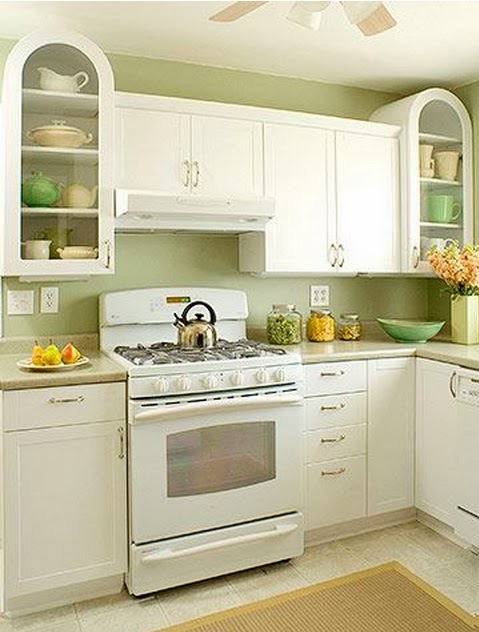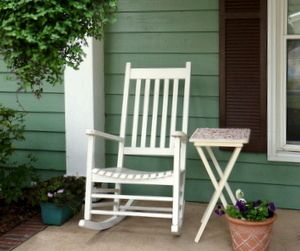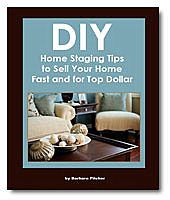Questions about Faucet Choices, Paint Colors, and Wicker Furniture
Monday, February 24, 2014
Q: We’re getting ready to sell our home. The faucets in both bathroom sinks match the faucets in the tub and shower stalls.
They all work and are in good condition, but they are shiny chrome, and dated. Should I invest in new ones that look more in step with the times? – Sarah H.
They all work and are in good condition, but they are shiny chrome, and dated. Should I invest in new ones that look more in step with the times? – Sarah H.
A: Spend your money somewhere else. There’s no sense removing and replacing this kind of hardware that is functioning just fine.
The fact that they are all the same style makes them appear new-ish, more like what you might find in a new house rather than an older one that’s had repairs over the years when things broke.
The fact that they are all the same style makes them appear new-ish, more like what you might find in a new house rather than an older one that’s had repairs over the years when things broke.
I would give the same advice to people with “dated” hinges and doorknobs, and even window locks. Working, and matching, keep them! When it comes to hardware like this, unless you want to purchase pricey top-of-the-line stuff, most of what you buy today doesn't compare to the quality commonly available even a few decades ago.
Condo question
Q: I am planning to stage the condo we just moved out of. It’s vacant except for a dining set, some end tables, and lamps. I’d like to add some wicker furniture because that’s easy to find at reasonable prices here in Florida . What do you think of wicker? -- Erica S.
A: As long as it is in good condition and comfortable, I would use wicker. Make sure any cushions look new and that the colors or patterns are not too bright or distracting. You’ll probably need a few pieces of contemporary or vintage upscale furniture (or what looks upscale) as well, so the condo doesn’t look too budget-conscious.
I don't recommend using outdoor wicker indoors.
Wall paint
Q: All the rooms in my house are now different colors – mint green in the living room, a burnt orange in the family room, peach in one bedroom, and blue in another. I want to paint all the rooms myself, and paint them all the same color. Doing one at a time, I know I can do it. My question is how do I figure out what color will work with all the rooms? -- Justine P.
A: Good for you for tackling the staging job yourself!
You need to determine what elements in all your rooms will remain in the house and then find a color that works with these “fixed fixtures.”
These fixtures could be the vinyl or tile in the bath, for example, or the carpet in the bedrooms. I would bring home from the paint store all the brochures that feature shades of neutrals and white, and find one color that has the undertones that harmonize with all your fixed fixtures.
I've blogged about how to choose a paint color. And, yes, white walls are fine for staging!
Home is empty
Q: Our home is for sale, and we have moved to a nearby town. The house is clean and empty. What can I do to make it sell fast? Don’t say add furniture because there is no way I can afford that. -- Keesha M.
A: I understand. Although I always recommend staging an empty home, my experience is that if a house is clean, in good repair, and priced right, you will find a buyer.
Make sure there is no deferred maintenance (a home inspection would help). The walls and possibly the trim should be freshly painted or at least look like they have been recently painted. And if there is carpet, it should be new or appear new. These are investments that pay off with a faster sale.
Good appliances, updated light fixtures, and extra-special curb appeal will sweeten the deal. Here are some other tips for making a vacant home look better to buyers.
Seasonal photo
Q: We are listing our home with a Realtor. He took a photo of the house just after it snowed. It looks pretty but I don’t want people to think about problems like snow when they see the photo, which will be the featured photo in our MLS listing. The exterior won’t look great until spring. What can I do meanwhile? -- Rachael and Alex B.
A: There isn’t much you can do unless you have another photo of your house in another season. Most people don’t, so there is a lesson here for all homeowners: Even if you are not thinking of selling your home immediately, having good pictures of your home in different seasons can come in handy in the future.
When your exterior gets some springtime color, you can substitute another photo. Meanwhile, just be glad your Realtor didn’t photograph your house when the snow turned mushy, icy, and dirty.
Don't forget that you can get answers to the most common home staging questions, plus much, much more, in my home staging eBook, DIY Home Staging Tips to Sell Your Home Fast and For Top Dollar.






